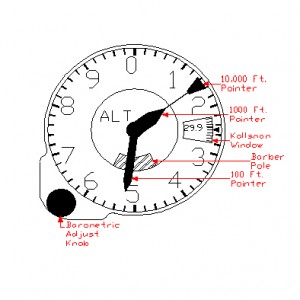Airspeeds- Basic Principle of Operation
Main Components
The major components of an air speed indicator are:
- Case
- Diaphragm
- Dial
- Pointer
- Mechanical Linkage
- Hair Spring
- Jewels and Pivots
Case
A standard air speed indicator for general aviation comes in a 31/8 inch diameter case. This is a standard size for most general aviation indicators. It is important that an air speed case be air tight as the case contains the static pressure input.
A leaky air speed case will cause the indicator to give erroneous readings. There are two input ports on the back of the case. These ports are the Pitot port and the Static port. These ports are connected to aircraft Pitot tube and Static port respectively.
Diaphragm
A diaphragm is essentially a balloon made of very thin metal. Typical metals used for this purpose are copper or brass. The diaphragm is sealed at all points except for one very thin pressure input tube. This tube is located directly in the center of the back face of the diaphragm. The pressure tube is connected directly to the Pitot port. The thickness of the metal used in manufacturing the diaphragm will determine the range of the air speed indicator (thin = low speed, thick = high speed). It is important to note that this diaphragm is extremely delicate. Picking up a unit a blowing air into the input port will damage the diaphragm.
Dial
The dial will contain the speed information and any pertinent range marks.
Pointer
The pointer points to the current speed of the aircraft as indicated on the dial.
Mechanical Linkage
The mechanical linkage connects the pointer to the diaphragm.
Hair Spring
The hair spring returns the pointer to zero when pressure is removed from the indicator.
Jewels and Pivots
The pivot is the spindle or axle for the pointer. Jewels are glass bearings on which the pivot rotates.




